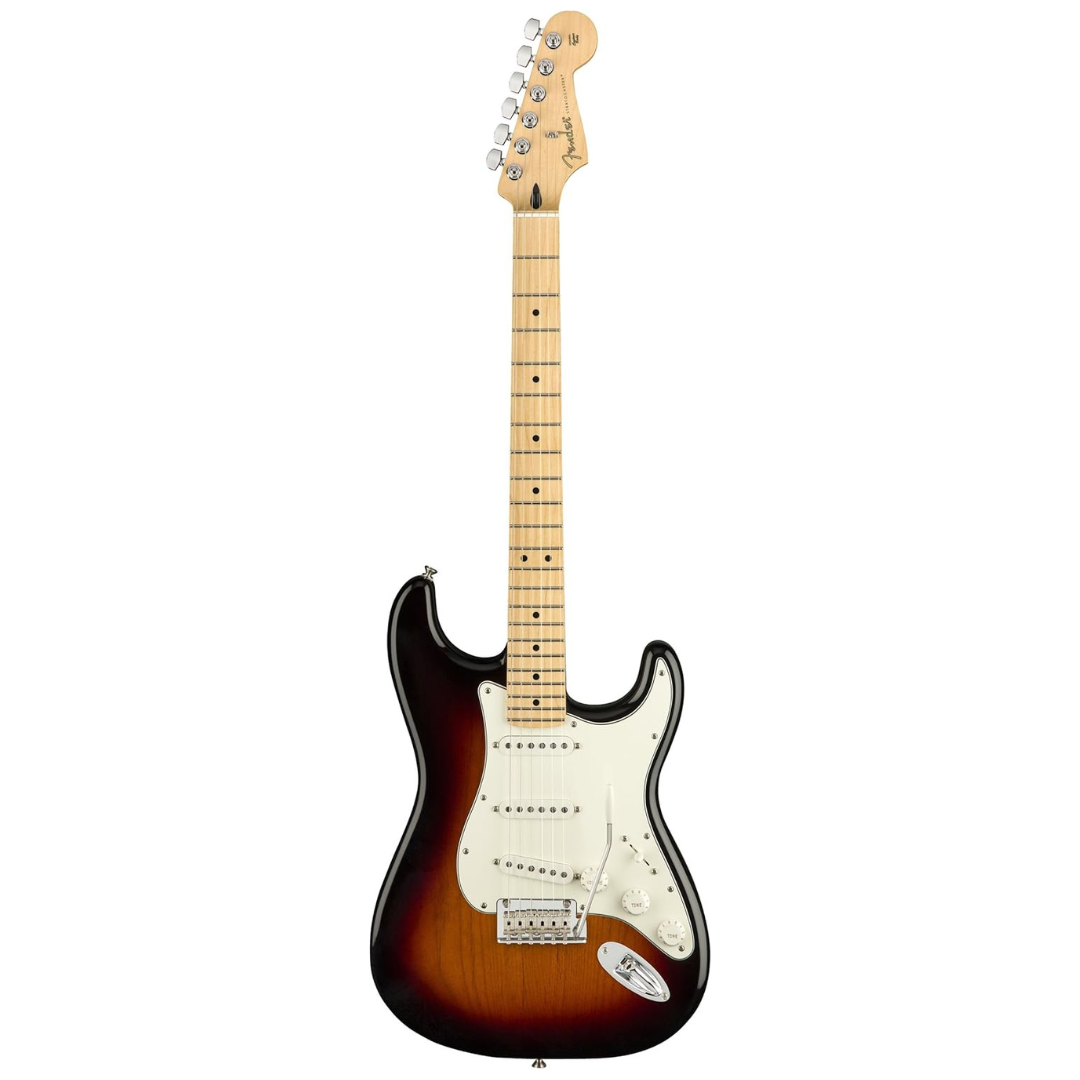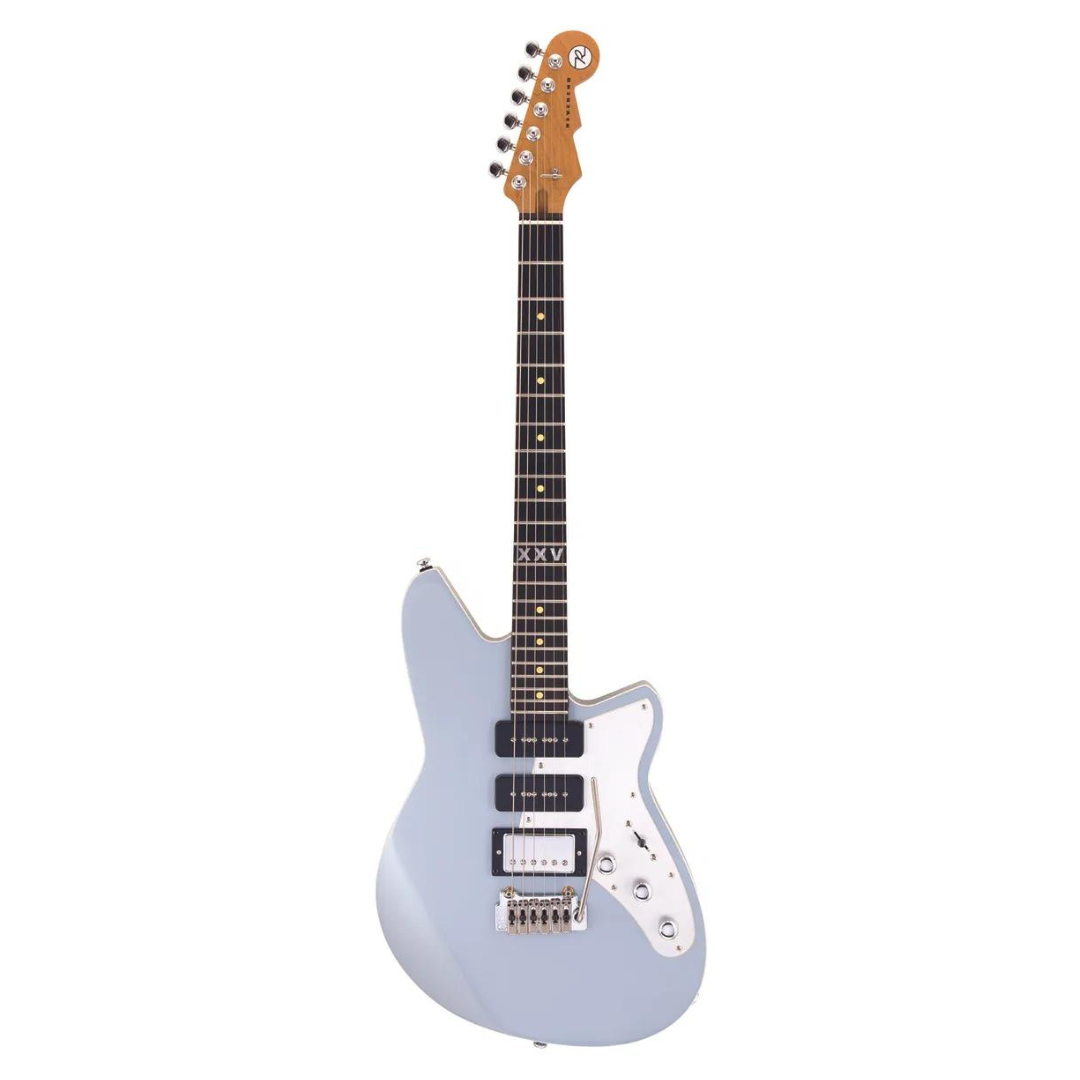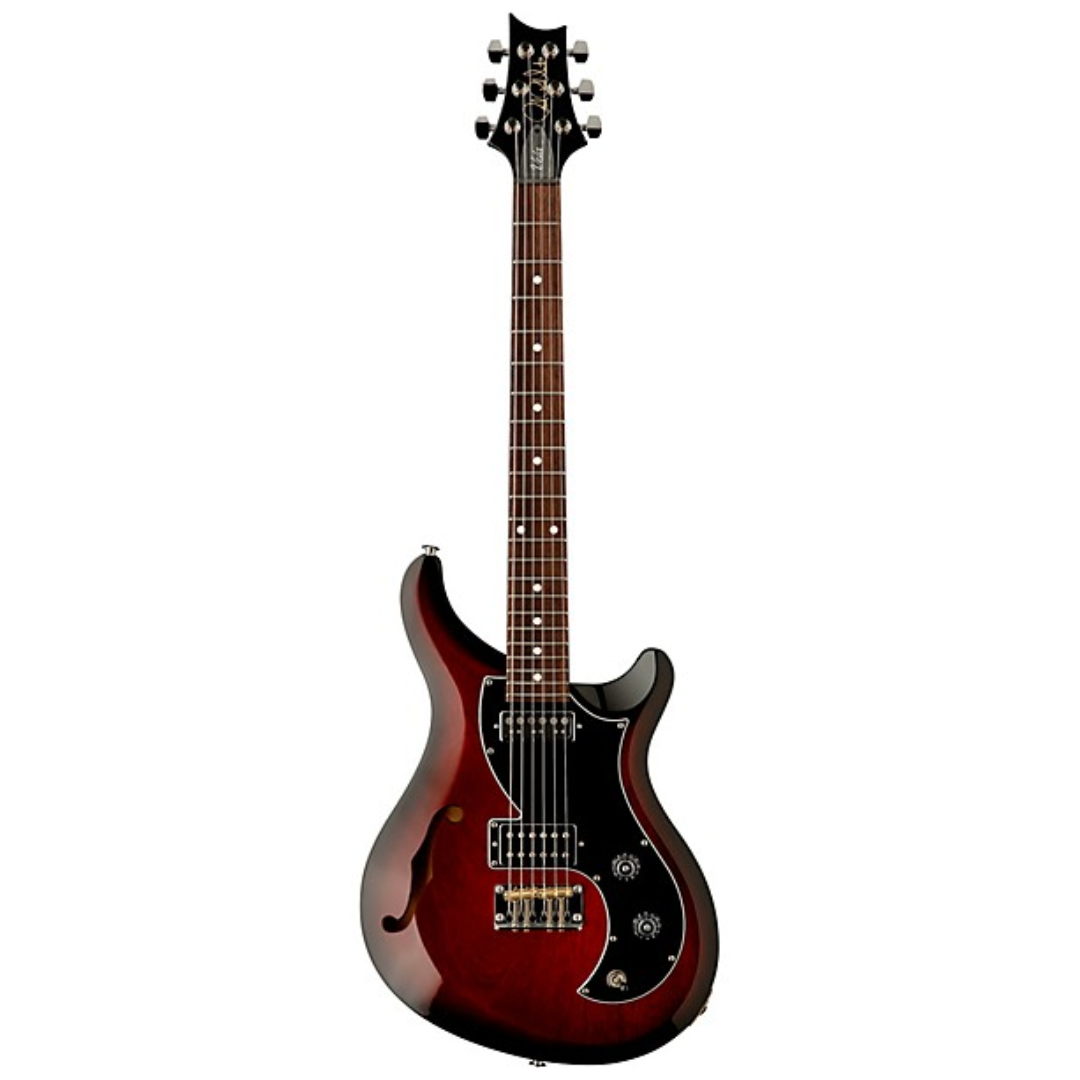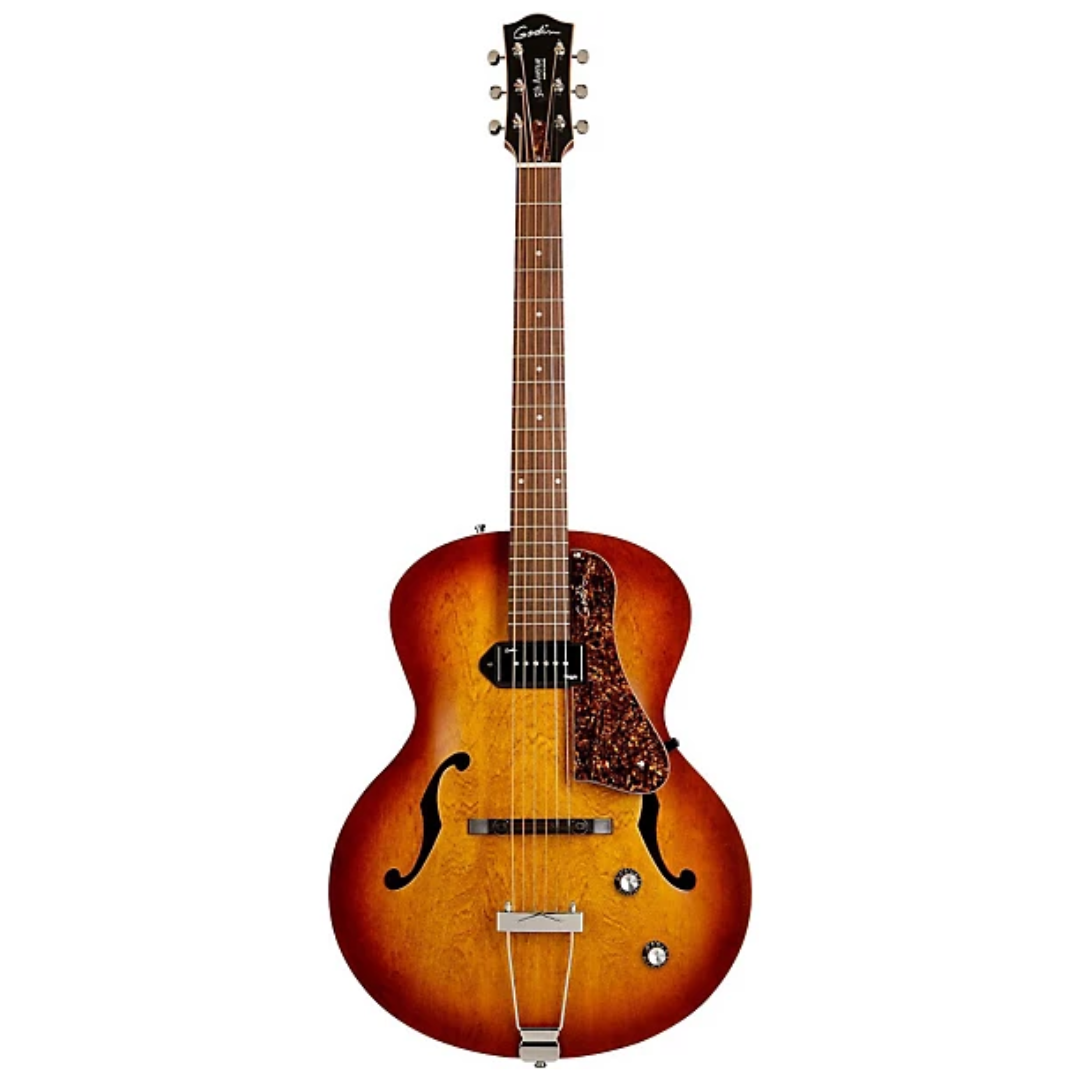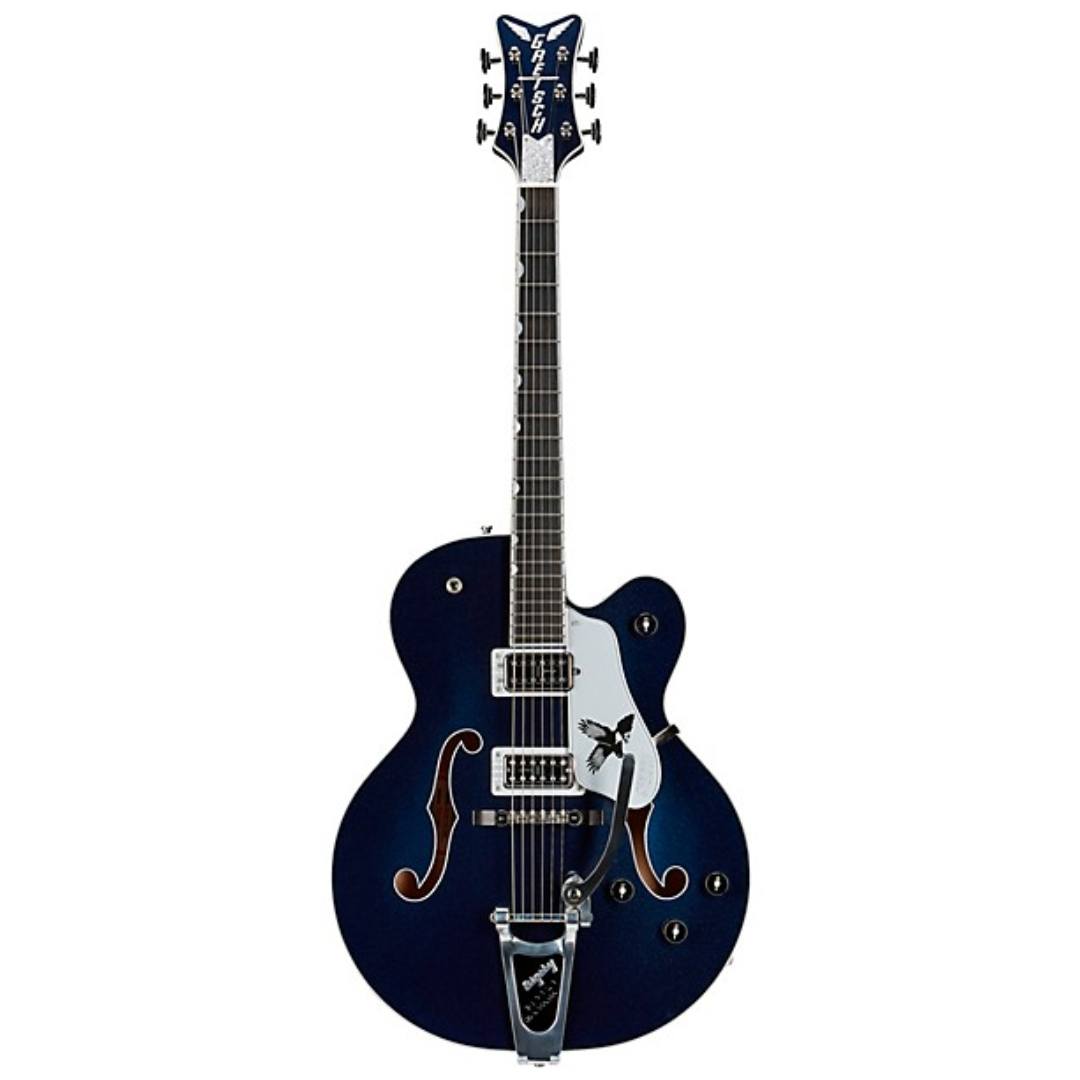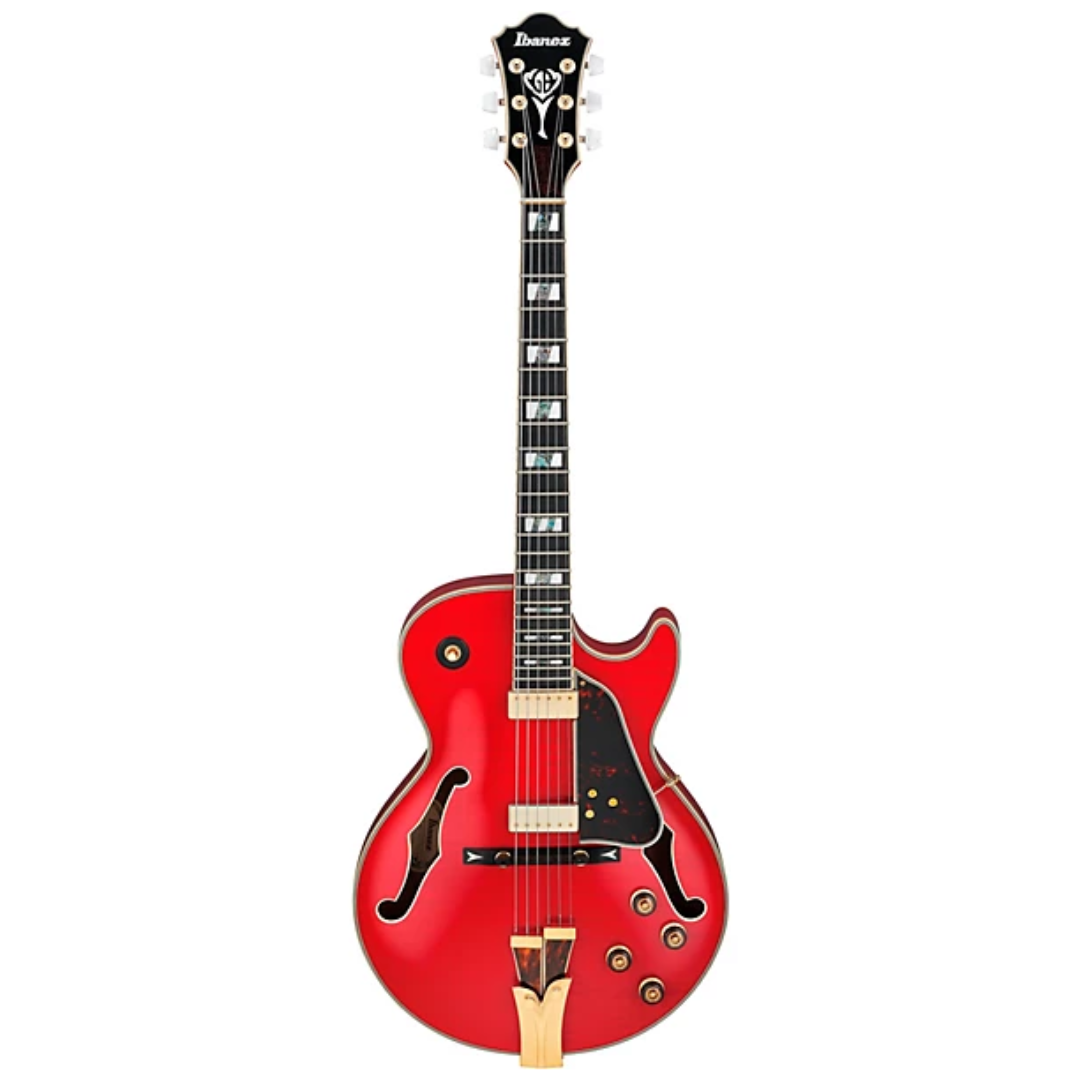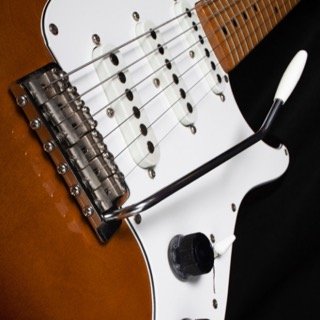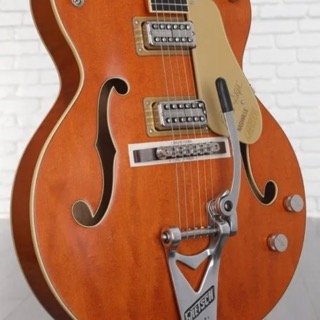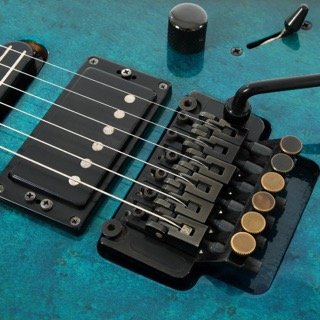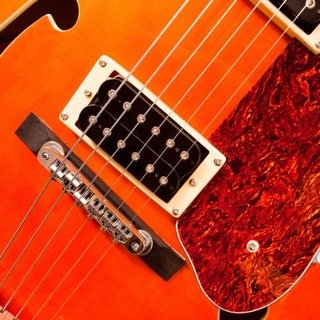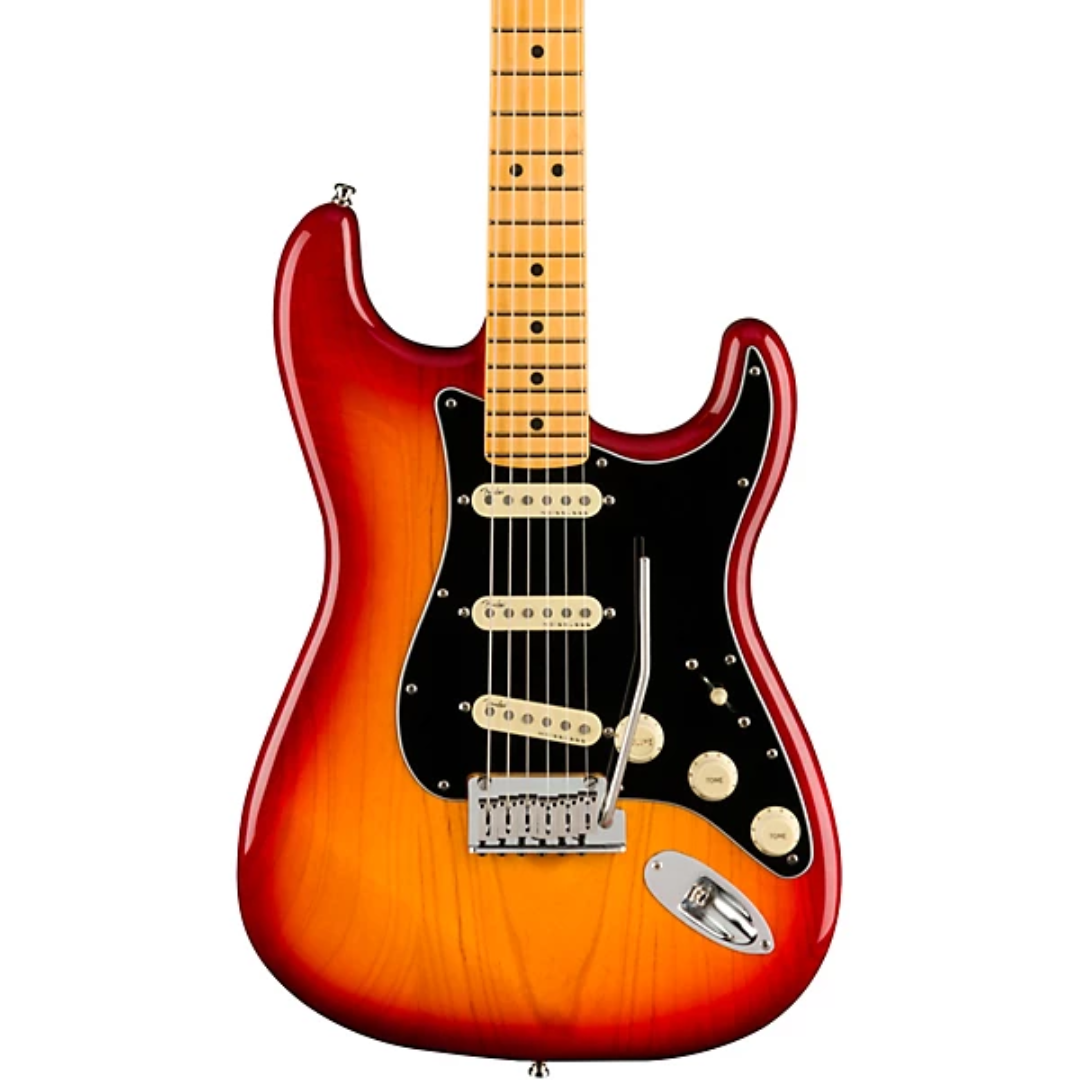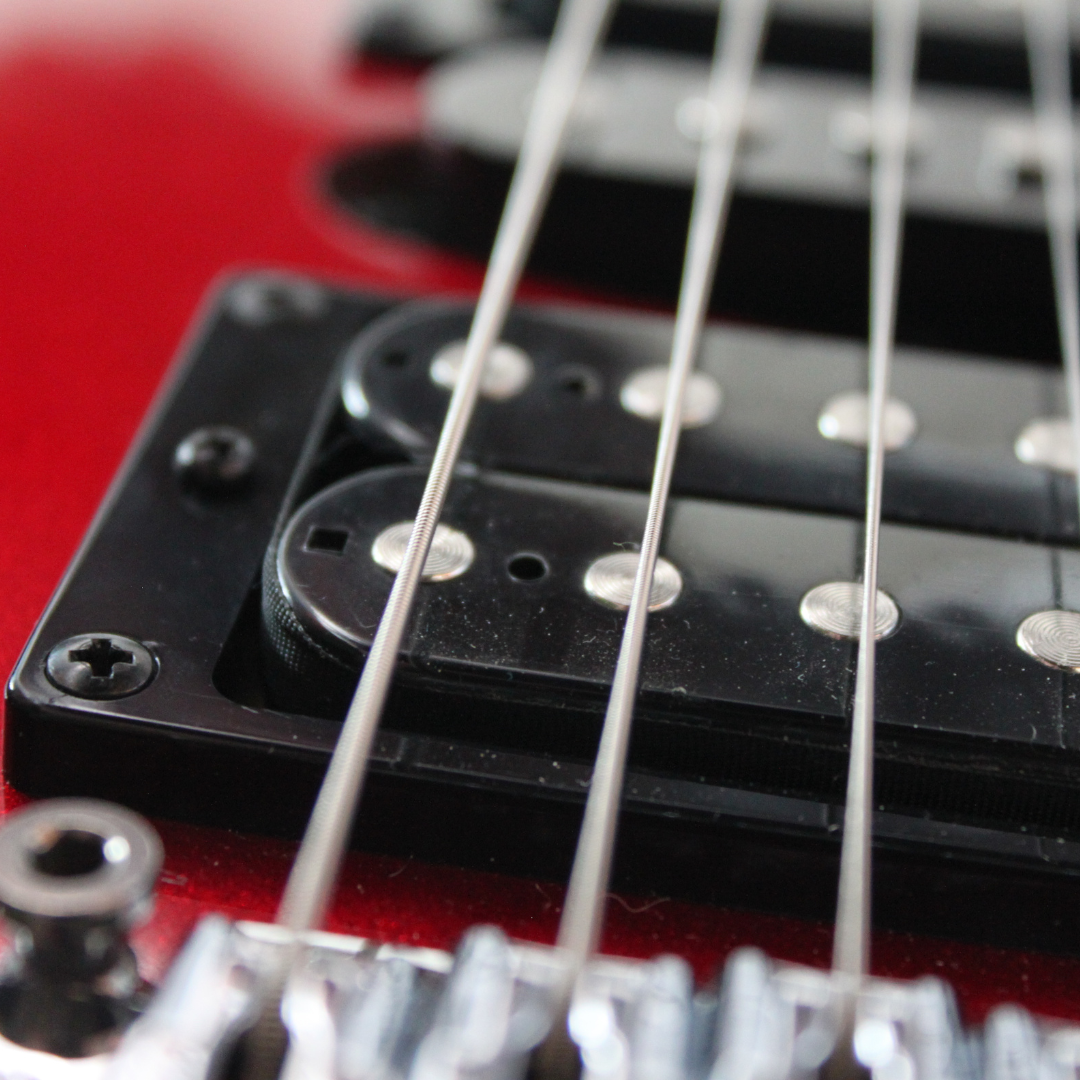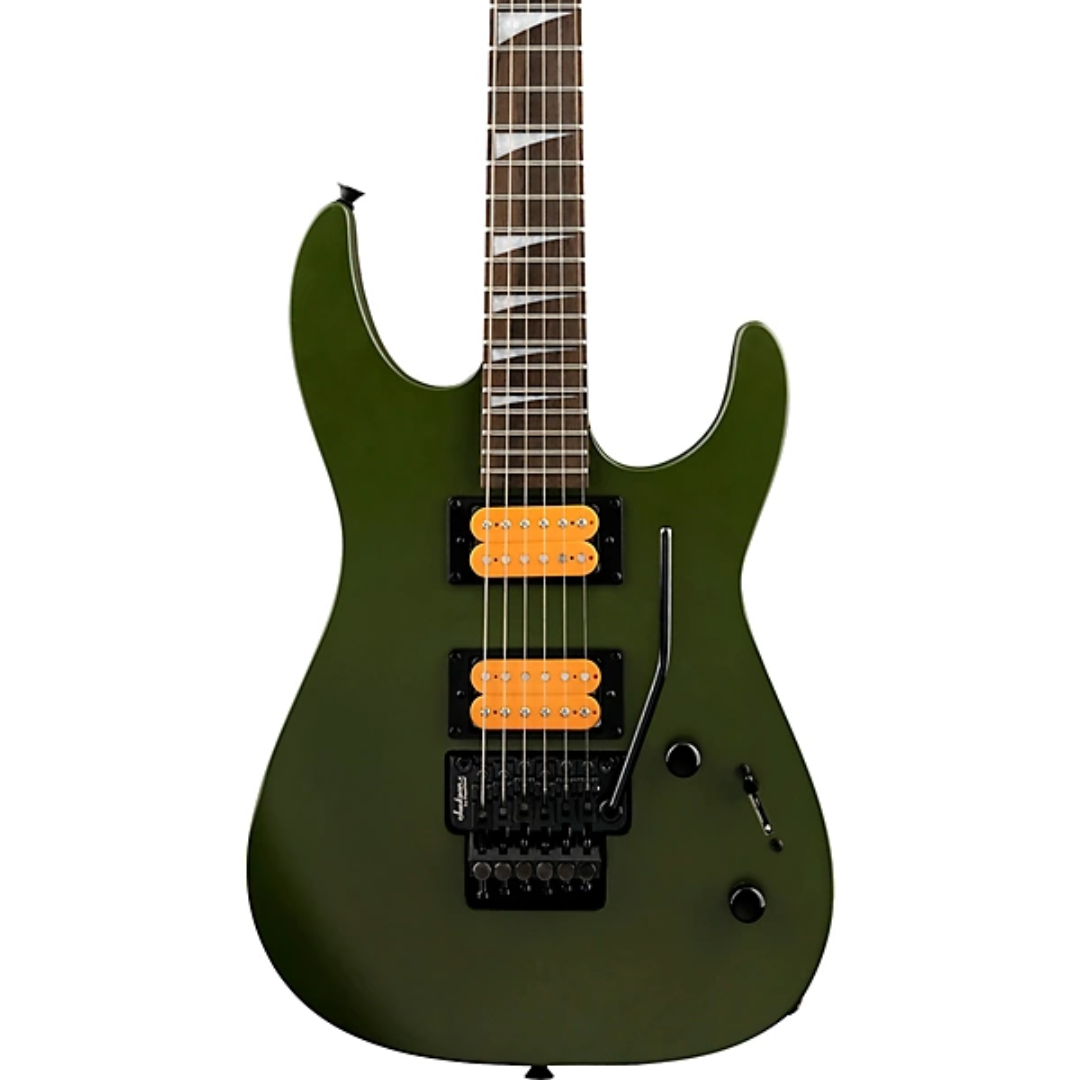Guitar Buying Guide
Shopping for your first guitar?
Here’s what to know before you buy
Contents:
What To Know Before You Buy
Learning Guitar: Do I Need a Teacher?
Electric Guitars
Body Types
Bridges
Pickups
Equipment: Amps
Top Picks: Electric Guitars
Acoustic Guitars
Body Types
Top Picks: Acoustic Guitar
What To Know Before You Buy
Acoustic or Electric?
When it comes to choosing a guitar, it can be a confusing decision for beginners. While some prefer to start with an acoustic guitar, it's worth noting that electric guitars can be easier to learn on. This is because the string height is usually lower, and the string gauge is lighter, making it easier to press down on the strings.
If you prefer the sound of an acoustic guitar, a nylon-string acoustic or classical guitar may be a good choice. These guitars are particularly finger-friendly for new players and younger learners. The softer strings are easier to play, which can help beginners build confidence and develop their skills more quickly.
Budget
When it comes to purchasing a new guitar, whether it be an electric or an acoustic, you can find options for each in a similar price range. Typically, you'll need to set aside around $200 to $400 for a brand new guitar that fits your needs and preferences. However, if you're shopping for a young aspiring guitarist, you'll be pleased to know that kids' guitars usually come with a slightly lower price tag. Generally, you can find a suitable instrument for them within the $100 to $200 range. It's worth mentioning that investing in a good quality case is essential to protect your new instrument. Opting for a soft case is generally recommended as it offers a balance of protection and ease of transportation. As for the price of a soft case, you can expect to spend between $40 to $100, depending on the features and brand. So, keep this in mind while planning your guitar purchase and don't forget to factor in the cost of a case for added protection and convenience.
Electric Guitar Equipment
If you’re learning on an electric guitar, you’ll also need a cable, a small amplifier, and a pair of headphones. The good news is you won’t need to spend a lot of extra money on these things. Read my top picks for practice amplifiers below, then expect to spend around $20 for a pair of headphones, but any earbuds with a mini plug end or mini plug adapter will do the trick. Guitar cables will range greatly in price and quality. I recommend this one from D’addario.
Guitar Set Up
A guitar setup involves several essential steps to guarantee that the instrument is in optimal playing condition. The setup process includes precisely measuring the guitar, making necessary adjustments, and thoroughly testing the guitar to achieve a specific feel or playability. Trusting an experienced and skilled guitar technician to perform a setup can drastically improve the sound and feel of your guitar and ultimately lead to a more enjoyable playing experience. Take your new guitar to a local guitar shop and ask for a basic setup before you invest too much time on the instrument. Expect a setup to cost between $65 - $115 at most local shops.
Do I Need a Guitar Teacher?
Avoid learning bad habits from the beginning and find yourself a guitar teacher that you love. Ideally, your teacher will be someone in your community who will meet with you in-person and show you exactly what you’re doing right and what you’re doing wrong.
Interested in seeing if lessons are right for you? Click below to try a free, no-obligation lesson on us!
Electric Guitars
So you’re already leaning in one direction or another. Maybe it’s that tobacco burst Stratocaster, or a jet black Gretsh with a Bigsby, or a classic vintage style Telecaster. Whatever it is, make sure it’s something you love the look of, and consider these other criteria.
Electric Body Types
Solid Body Guitars
Solid-body guitars are smaller-bodied guitars made of solid wood. Depending on the type of wood, solid body guitar can weigh between 7-14 lbs. Solid-body guitars are appealing to all types of guitar players, especially rock and blues players.
Examples:
Sunburst Fender Stratocaster, Gibson Gold Top Les Paul, Reverand Six Gun (Offset Body Type)
Semi-Hollow Body Guitars
Semi-hollow body guitars have small acoustic chambers carved into the body. These are generally more lightweight and add a slight acoustic property to the sound. Some semi-hollow guitars have larger bodies, similar in size to an acoustic but not nearly as thick. Semi-hollow body guitars are appealing to blues, country, and jazz players.
Examples:
Fender Thinline Telecaster, Gibson ES-335, PRS s2 Semi-Hollow
Hollow Body Guitars
Hollow Body guitars have full acoustic bodies and are larger in size. They have a more full acoustic property but still have electronics built in for amplification. Hollow body guitars are suited best for jazz and country but some rock players also prefer their retro vibe and sound.
Examples:
Godin 5th Avenue, Gretch G6136T, Ibanez George Benson Signature
The Bridge
Electric guitar bridges come in various shapes and sizes to support the guitar strings and ensure proper string height, tension, and tuning stability. The two primary types of electric guitar bridges are the tremolo bridge and the fixed bridge. The tremolo bridge allows the player to adjust the pitch of the notes by moving the bridge up and down, while the fixed bridge remains stationary. The choice of bridge depends on the player's preference and playing style. Tremolo bridges are popular among players who enjoy dive-bombing and other vibrato effects, while fixed bridges are favored by those who prefer better tuning stability.
The Tremolo Bridge
The tremolo bridge can add more expression to your playing by allowing you to adjust string tension while playing. This allows you to alter the pitch of any string by pushing down or pulling up on the tremolo bar. However, it's important to keep in mind that this technique can affect the tuning stability of your instrument. While it’s a cool sound, proper maintenance and extra attention to tuning are essential.
The fixed bridge
A fixed bridge is known for its stability, meaning it's less likely to go out of tune compared to a tremolo bridge. We highly recommend buying an electric guitar with a fixed bridge if you're a beginner. True, you won’t get the cool effects of the tremolo bridge but it will make the learning process smoother and also save you from the distraction of constantly tuning your guitar.
Pickups
Single Coil
Lower output, bright and clear tone.
Great for blues and rock
Tend to generate electronic hum when distorted
Noiseless single coils are available
Famous guitar players that used single coil pickups: Jimi Hendrix, Stevie Ray Vaughn, Eric Clapton, David Gilmour, John Frusciante, Mark Knopfler, Yngvie Mamsteen, Jeff Beck, Pete Townsend
Humbuckers
Two single-coils bound together in reverse polarity, creating a thicker sound that cancels out the “hum.”
Generally has higher output and thicker tone
Great for rock and preferred by jazz players
Famous guitar players that used humbucker pickups: BB King, Jimmy Page, Billy Gibbons, Billie Joe Armstrong, Zakk Wylde, Neil Young, Derrick Trucks, Santana
Electric Guitar Picks
Here are my top Electric Guitar picks. Keep reading to see my acoustic guitar top picks and get educated on additional buying criteria that matters.
Budget-Friendly
Best Value
Harley Benton ST-62DLX VW Vintage Series
Best Value
Squier Affinity Series Telecaster Electric Guitar
Mid-price Upgrade
G&L Tribute Legacy Electric Guitar
Mid-price Upgrade
Squier Classic Vibe '50s Telecaster
Electric Guitar Amps
Don’t forget the amp! You don’t need a Marshall Stack or a vintage tube amp to sound great. A small practice amp with a good set of headphones will do the trick. Or if you want to jam with friends get something between 25 and 100 watts. All modern amps these days have headphone jacks and line-in jacks to play along with your favorite tunes.
Here’s my list of recommended amps from small to medium-small:
Blackstar Fly 3
Boss Katana Mini
Positive Grid Spark Mini
Laney Mini-ST-SuperG
Fender LT Mustang 25
Positive Grid Spark
Line 6 Catalyst 60
Boss Katana 50
Acoustic Guitars
If you’ve decided an acoustic guitar is for you, you’re probably wondering how to spend: should I buy new or look for something second-hand?
My advice - buy new or bring a trusted guitarist friend with you when you purchase. Cheap, used acoustic guitars almost always have string height issues due to cheap construction, cheap materials, and a neck that can’t handle the string tension.
What this means is it will be difficult to play but you won’t know why. You’ll bring the guitar home and try playing a few chords and discover just how hard it is to play. The guitar will get tossed aside and cashed in for golf lessons or that new video game you wanted to try.
The truth is, it’s not you- it’s the guitar.
The larger the gap between the fretboard and the string the more finger tension that’s required to get a good sound. Lower string height = easier to play.
Buy new, and plan to spend between $200-$300. If the guitar is bad for any reason, return it. Best yet, go to a local store and try things for yourself but bring your guitar buddy.
Acoustic Body Types
Acoustic Guitar Picks
Here is my list of recommended acoustics for first-time players.
Kids Acoustic Nylon String
½ Sized Classical
Yamaha CGS102
½ Sized Classical
Cordoba Protege C1M
¾ Sized Classical
Yamaha CGS103
¾ Sized Classical
Cordoba Prtoge C1M
Kids Steel String Acoustic
¾ Sized
Yamaha JR1
¾ Sized
Fender FA15
Adult Steel String Acoustics
Yamaha FG800
Fender CC60S
Martin D Jr-10
Takamine GD20
Angelico Premier
Adult Nylon
Cordoba C5
Yamaha CG142SH
Takamine GC5
Disclaimer: Reading School of Guitar is not affiliated, associated, authorized, endorsed by, or in any way officially connected with Sweetwater.com., or any of its subsidiaries or its affiliates. Sweetwater does not pay us to advertise or offer us any incentives. Sweetwater.com is linked in this article simply because, in our opinion, they have the best customer service, prices and quality of products around.








